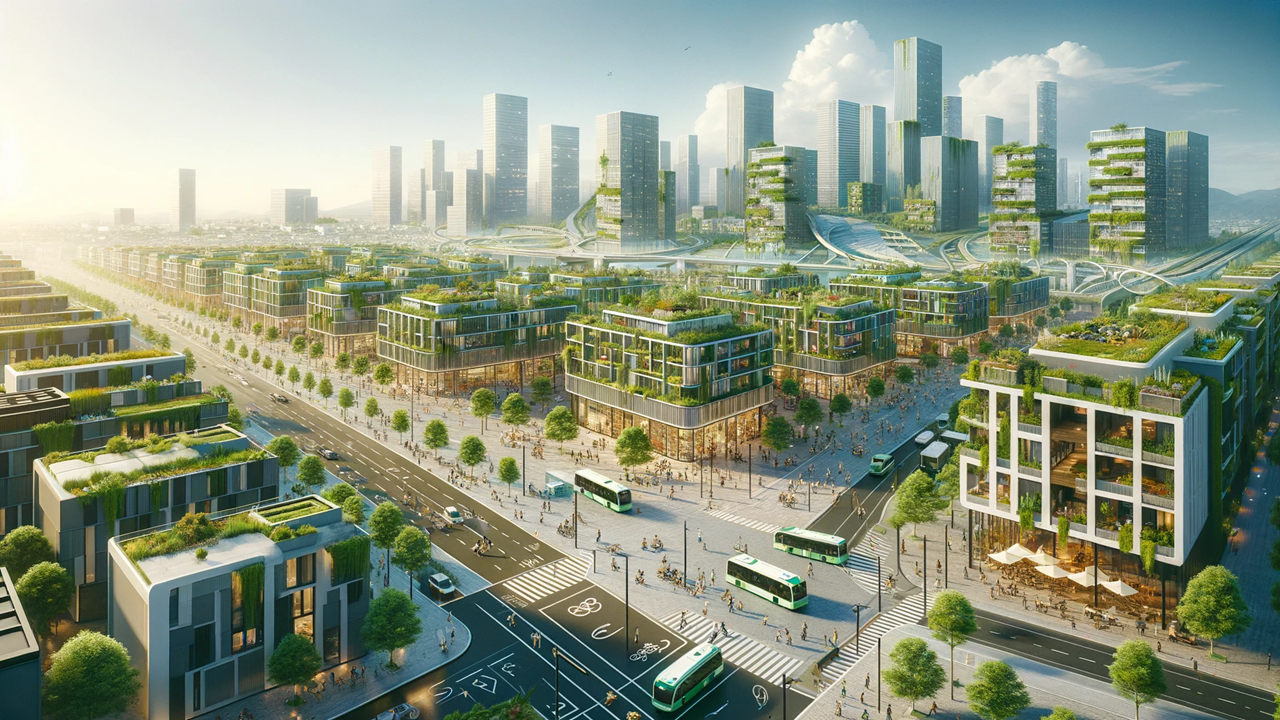Reimagining Urban Cores: Sustainable Regeneration for Future Cities
This article examines the latest research on sustainable urban regeneration, highlighting how integrating sustainable construction, collaborative governance, and green technologies can transform urban areas into resilient and inclusive communities. It explores the challenges, benefits, and successful global examples of these strategies in action.

As cities worldwide face the dual challenges of urban decay and the urgent need for sustainability, new research is paving the way for a revolution in urban regeneration. This study emphasizes sustainable construction management and collaborative governance as key strategies to revitalize urban areas, integrating green technologies and public engagement to foster resilient and inclusive communities. "Reimagining Urban Cores: Sustainable Regeneration for Future Cities" explores how these approaches are transforming urban landscapes into models of sustainability and inclusivity.
The Foundations of Sustainable Urban Regeneration
Urban regeneration traditionally focuses on revitalizing areas that are physically and economically in decline. The latest research builds on this by advocating for sustainability as the cornerstone of regeneration efforts. This involves not only the renewal of buildings and infrastructure but also ensuring that these improvements are environmentally friendly and socially inclusive.
Sustainable Construction Management
At the heart of sustainable urban regeneration is the concept of sustainable construction management. This approach prioritizes the use of green technologies and materials that minimize environmental impact. For instance, the incorporation of energy-efficient systems, the use of recycled materials, and the adoption of green building practices are all pivotal. These practices not only help reduce the carbon footprint of urban development but also lead to longer-term cost savings and enhanced community well-being.
Collaborative Governance
Collaborative governance is another critical element. This model involves multiple stakeholders, including government entities, private sector participants, and local communities, working together to make decisions that shape the urban landscape. Such an approach ensures that the regeneration projects are not only environmentally sustainable but also socially equitable. Public engagement is vital here, as it empowers residents, giving them a voice in the regeneration process and ensuring that the outcomes meet their needs and aspirations.
Integrating Green Technologies
The use of green technologies in urban regeneration projects is transforming cityscapes. Solar panels, green roofs, and sustainable urban drainage systems are just a few examples that enhance energy efficiency and manage resources more prudently. Moreover, these technologies often become a part of the city’s identity, symbolizing a commitment to sustainable development.
Challenges to Implementation
Despite the clear benefits, implementing sustainable urban regeneration is not without challenges. The high initial costs of green technologies and sustainable materials can be a significant barrier. Furthermore, aligning the diverse interests of all stakeholders requires robust communication and negotiation skills, which can be challenging to cultivate in diverse urban environments.
Economic and Social Benefits
The economic benefits of sustainable urban regeneration are manifold. By investing in green infrastructure, cities can attract businesses and residents looking for a high-quality, sustainable living environment. Additionally, these projects often stimulate local economies by creating jobs, particularly in the construction and renewable energy sectors. Socially, sustainable regeneration projects enhance the quality of life by providing healthier living environments and more cohesive communities.
Case Studies of Success
Around the world, cities are embracing sustainable urban regeneration with remarkable results:
- In Freiburg, Germany, the Vauban district is a leading example of sustainable urban living, featuring comprehensive recycling systems, solar-powered homes, and a car-free environment.
- Singapore has integrated vertical gardens and water recycling systems into its urban planning, setting a high standard for urban sustainability.
The Path Forward
Looking forward, the integration of sustainability in urban regeneration will likely become the norm rather than the exception. As technology evolves and becomes more cost-effective, and as more stakeholders recognize the long-term benefits of sustainability, these practices will increasingly be seen as essential components of urban development.
Conclusion
Sustainable urban regeneration is an evolving field that promises to redefine the future of cities. By integrating sustainable construction management, collaborative governance, and green technologies, cities can not only rejuvenate their physical spaces but also enhance their social fabric and environmental resilience. The journey towards sustainable urban environments is complex and multifaceted, but it is also critically necessary for the future health and prosperity of urban populations worldwide.










